Differences between broccoli and cauliflower
Broccoli and cauliflower have recently taken a place in our kitchens and backyards. Because of the superficial similarity of vegetables, confusion sometimes occurs. And we are faced with the task of figuring out what these plants are, whether there is a difference between them and what are the benefits of them.
The content of the article
Differences between broccoli and cauliflower
Looking at two multi-colored, but so similar heads of cabbage, one gets the impression that they are varieties of the same plant.
Broccoli is cauliflower or not
The old name for broccoli, which sounds like "Italian asparagus", can be misleading. This name appeared due to the branched shoots and the country where it was cultivated.
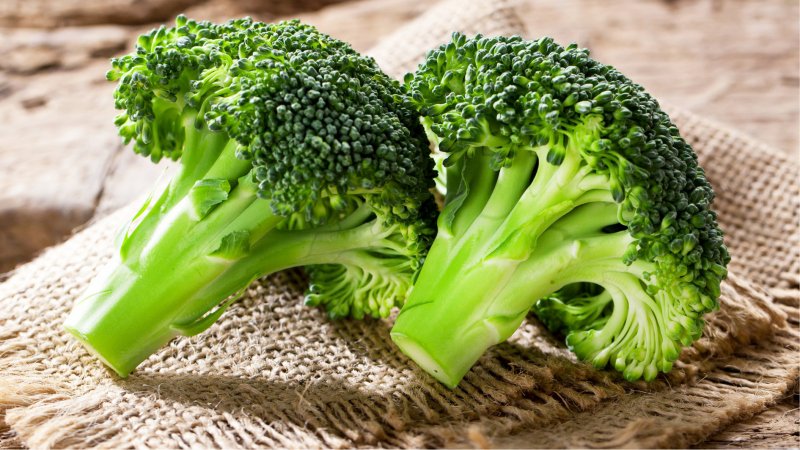
In fact broccoli - not asparagus... Both plants belong to the Cabbage family (Cruciferous), the type Cabbage. The difference between these vegetables and other types of cabbage is that not leaves, but unripe buds / inflorescences are suitable for food. Broccoli is the closest relative and predecessor of cauliflower, which explains their physical similarity.
Reference. Broccoli (broccoli - "shoots, twigs") bred in ancient Rome and until the 16th century did not leave Italy. In the 16th century it came to France, in the 18th century - to England, at the beginning of the 20th - to America and only at the end of the 20th century - to Russia. Now, in addition to the traditional name, they also use "asparagus".
What cauliflower and broccoli look like
White, yellowish, slightly creamy shades are characteristic of cauliflower inflorescences... Although it has much more varieties and is striking in color. In addition to classic white, there are varieties with orange, light lilac and salad shades.
The plant is annual, the stem is cylindrical, 10 to 70 cm long. Its top is crowned with a head, consisting of numerous primordia of inflorescences, close to each other. The leaves are narrow, wedge-shaped or ovoid, light green to greenish blue in color.
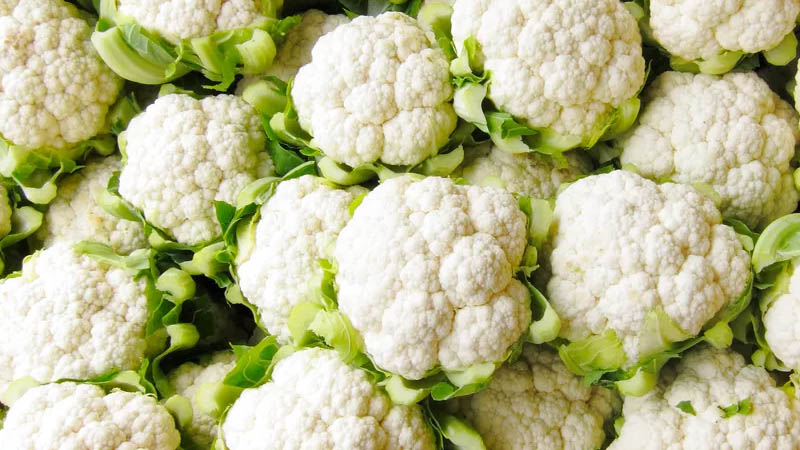
Asparagus is always darker tones - varying degrees of intensity of green, sometimes purple. The stem is larger, branches closer to the apex and reaches 50-90 cm. The branches are densely covered with buds, creating a head, which is cut off until the inflorescences begin to bloom and turn yellow. The leaves of the plant are pale green with a bluish tint.
The color of the broccoli can be seen in the photo.
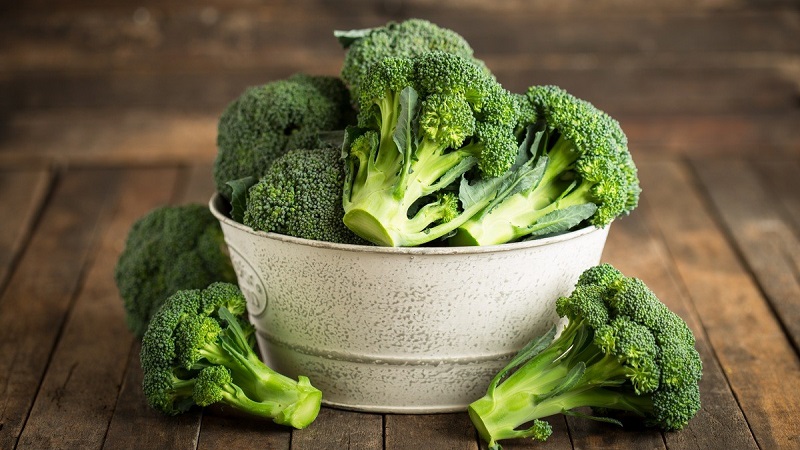
How broccoli differs from cauliflower
There are not many significant differences.
External signs
The obvious differences in color are complemented by other factors. The cauliflower has a rounded shape, and the asparagus looks like a small tree. The maximum weight of a cauliflower head is 5 kg. This is significantly more than the largest head of broccoli can weigh.
Demanding care during cultivation
Cauliflower is sensitive to temperature changes. For long periods with a temperature of + 10 ° C and below, growth slows down, and the heads become small and coarse. At + 25 ° C and above, the plant also feels uncomfortable - heat and lack of moisture lead to looseness and excessive hairiness of the fruit.
Optimal conditions for its growth are + 15 ... + 18 ° C, enough sunlight, regular watering and a nutritious soil containing copper, boron, magnesium, molybdenum and a neutral pH level. The latter is especially important, given that the plant has a weak fibrous root system located in the upper layers of the soil.

Broccoli is not so pretentious: it grows on any soil, the optimum temperature is from + 16 ° C to + 25 ° C, but it also loves timely watering.
Reference. Cauliflower does not grow wild. Presumably, it was brought out in the Middle Ages in Syria, so its second name is "Syrian cabbage". It was smaller in size than modern varieties and slightly bitter. Despite its plain look and bitter taste, it was popular and appreciated by Avicenna as a source of vitamins in winter.
Yield
Syrian cabbage bears fruit only once. The uniqueness of asparagus is that when the head is cut off, lateral buds begin to develop and bear fruit, and it is possible to harvest the crop for several months in a row. The main thing is to have time to cut the buds while they are green. If the inflorescences become yellow, they can no longer be used for food.
Which is healthier - broccoli or cauliflower
Since both vegetables are members of the same family and are closely related crops, they share many qualities. To determine which one is more useful, let's study the chemical and mineral composition.
Broccoli and Cauliflower Composition
Both crucifers are to dietary products, and the indicators of their nutritional value differ slightly.
| Indicator (per 100 g of raw product) | Cauliflower | Broccoli |
|---|---|---|
| Calorie content, kcal | 25 | 34 |
| Water, g | 92 | 91 |
| Proteins, g | 1,9 | 2,9 |
| Fat, g | 0,28 | 0,35 |
| Carbohydrates, g | 4,96 | 5,24 |
Vegetable proteins contain about 20 amino acids, of which 12 are essential.
The chemical composition of the products is also similar, with the exception of a few values.
| Nutrient (per 100 grams of raw vegetables) | Cauliflower, mg | Broccoli, mg |
|---|---|---|
| A (retinol) | — | 0,03 |
| Beta carotene | — | 0,36 |
| C (ascorbic acid) | 48,2 | 91 (99% DV) |
| B1 (thiamine) | 0,09 | 0,07 |
| B2 (riboflavin) | 0,07 | 0,12 |
| B3 (niacin) | 0,59 | 0,64 |
| B4 (choline) | 44,3 | 18,7 |
| B5 (pantothenic acid) | 0,67 | 0,54 |
| B6 (pyridoxine) | 0,17 | 0,16 |
| B9 (folic acid) | 0,05 | 0,06 |
| E (tocopherol) | 0,09 | 0,8 |
| K (phylloquinone) | 0,02 | 104 (85% DV) |
| Sodium | 10 | 27 |
| Potassium | 210 | 315 |
| Calcium | 60 | 47 |
| Magnesium | 17 | 24 |
| Phosphorus | 51 | 81 |
| Iron | 1,4 | 0,8 |
| Manganese | 0,16 | 0,23 |
| Copper | 0,04 | 0,05 |
It is obvious that Italian asparagus surpasses not only cauliflower, but also all plants of the Cabbage family in terms of vitamin A content, and vitamin K is generally extremely rare in high concentrations. But both species contain rare vitamin U (vitamin-like compound methionine) and sulforaphane - an organic compound in young shoots of broccoli and cauliflower (to a lesser extent).
Attention! In several days storage vitamin C content is halved. To preserve its vitamin value, it is recommended to keep the cabbage refrigerated or frozen.
The benefits and harms of broccoli and cauliflower
Both vegetables are not in vain considered leaders in dietary nutrition, since they have a negative calorie content. This means that the body spends more energy on the digestion of the product than it receives from its consumption. And even with such a low energy value, vegetables provide a feeling of fullness due to their high fiber content.
Regular consumption of food has a positive effect on health:
- vitamin A has a beneficial effect on visual acuity, skin, hair and nails;
- ascorbic acid - an antiviral agent and immunomodulator - in combination with magnesium, improves the absorption of iron, which is involved in the process of hematopoiesis;
- B vitamins stabilize the nervous system, folic acid is involved in the formation of fetal nerve tissues;
- niacin activates the brain and blood circulation;
- magnesium and potassium strengthen blood vessels and improve the functioning of the cardiovascular system;
- methionine - an enzyme-forming substance - maintains the health of the gastric mucosa and normalizes digestion;
- kaempferol contained in inflorescences prevents or reduces the manifestation of allergic reactions, removes toxins from the body, acts as a tonic and restorative component;
- the herbal antibiotic sulforaphane fights inflammatory and infectious processes, reduces the risk of malignant tumors;
- Chlorophyll, Sinigrin and Glucoraphanin also have anticancer activity and together are highly effective.
Sulforaphane decomposes when boiled for more than 20 seconds. To teach the maximum benefit, use the method of Chinese scientists: chop raw broccoli into 2 mm pieces, set aside for 30-90 minutes and fry lightly, stirring constantly. With this treatment, the level of sulforaphane increases almost 3 times. The highest concentration of organic compounds is found in young shoots.
The peculiarity of both vegetables is the inability to cause an allergic reaction. However, there is a list of contraindications for use:
- thyroid disease (hypothyroidism) - cruciferous plants can be consumed, but in small quantities 2-3 times a week;
- gout;
- renal failure;
- recovery period after operations on the abdominal organs.
Which is tastier - broccoli or cauliflower
It is unlikely that it will be possible to come to a common judgment which of their vegetables is tastier. For example, the more intense smell of asparagus during cooking pays off for the delicate texture of the finished dish. Much depends on your own taste preferences and cooking methods. how broccoliand cauliflower are eaten raw, boiled, stewed, fried, baked and pickled. Vegetables are prepared individually or in combination with each other.
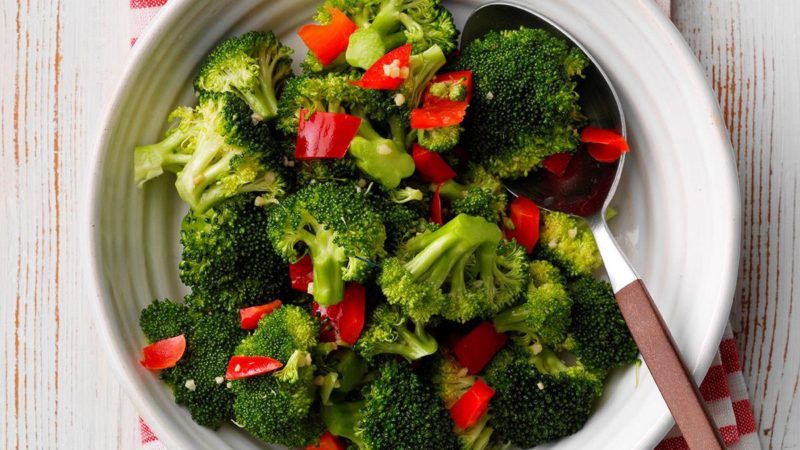
The imposed opinion about the nasty, slippery mass comes from those who have tasted overcooked cabbage. The main rule for getting a delicious dish is not to overdo it with heat treatment. It's best to play it safe and leave the vegetables slightly damp for a rich flavor and maximum benefit.
What is the name of a hybrid of broccoli and cauliflower
Breeders have bred a hybrid with the specific characteristics of both crops, but at the same time, it stands out both in appearance and in taste. The name Romanesco (romanesco - Roman) indicates the origin of the culture from the vicinity of Rome (Italy) and corresponds to the exquisite appearance of the soft green pyramidal inflorescences.
The nut-creamy taste of the hybrid has won fans all over the world. And the simplicity of cultivation, which is practically no different from the cultivation of cauliflower and broccoli, makes the plant accessible to all cruciferous lovers.
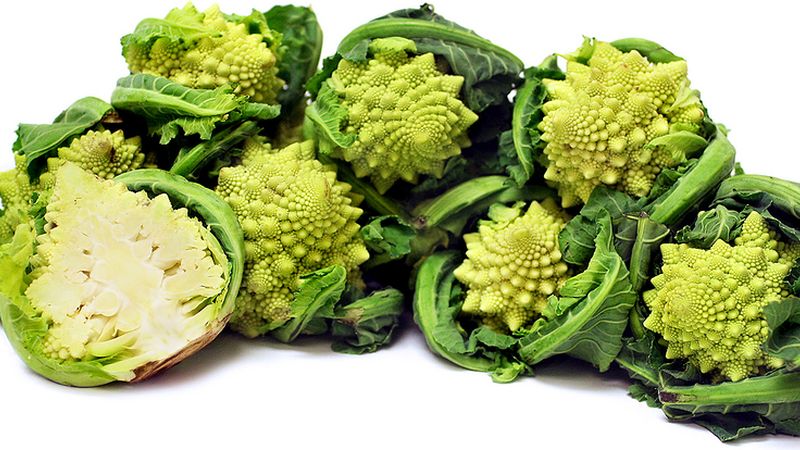
Conclusion
Cauliflower and broccoli are unique members of the cruciferous family, combining good taste and invaluable health benefits. There is no need to choose one thing - eating asparagus and Syrian cabbage, supplemented by their Romanesco hybrid, will enrich the diet and improve well-being.